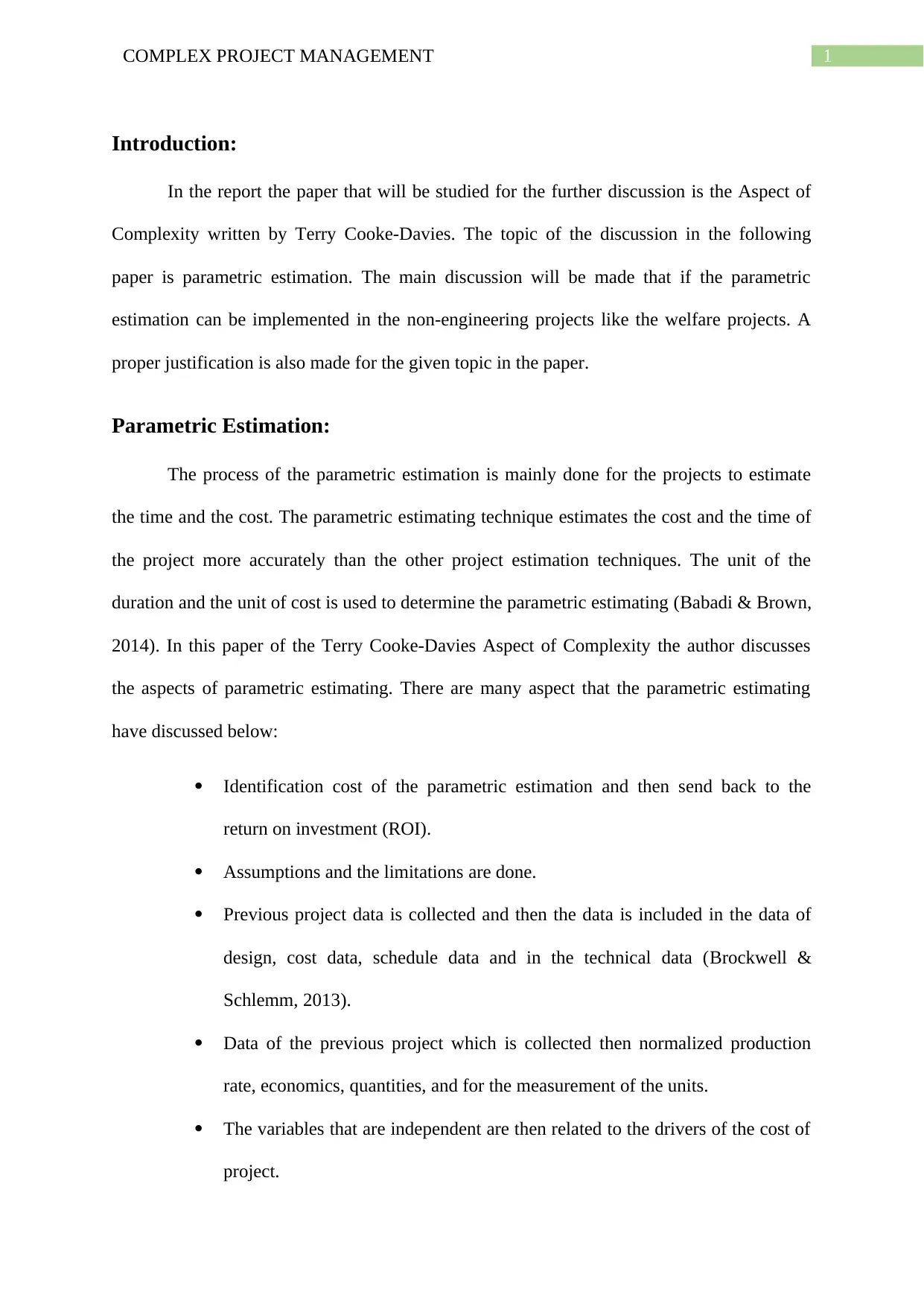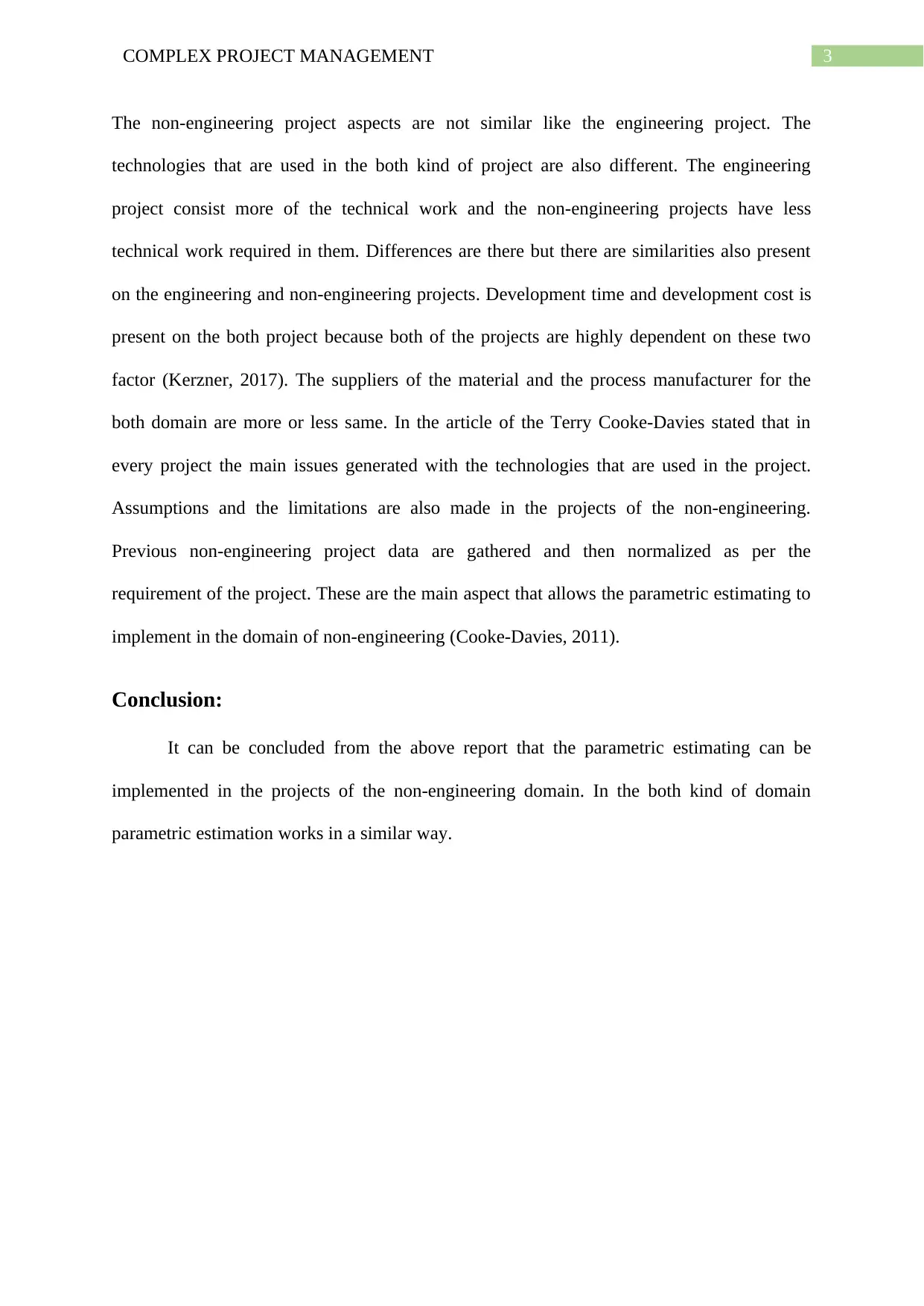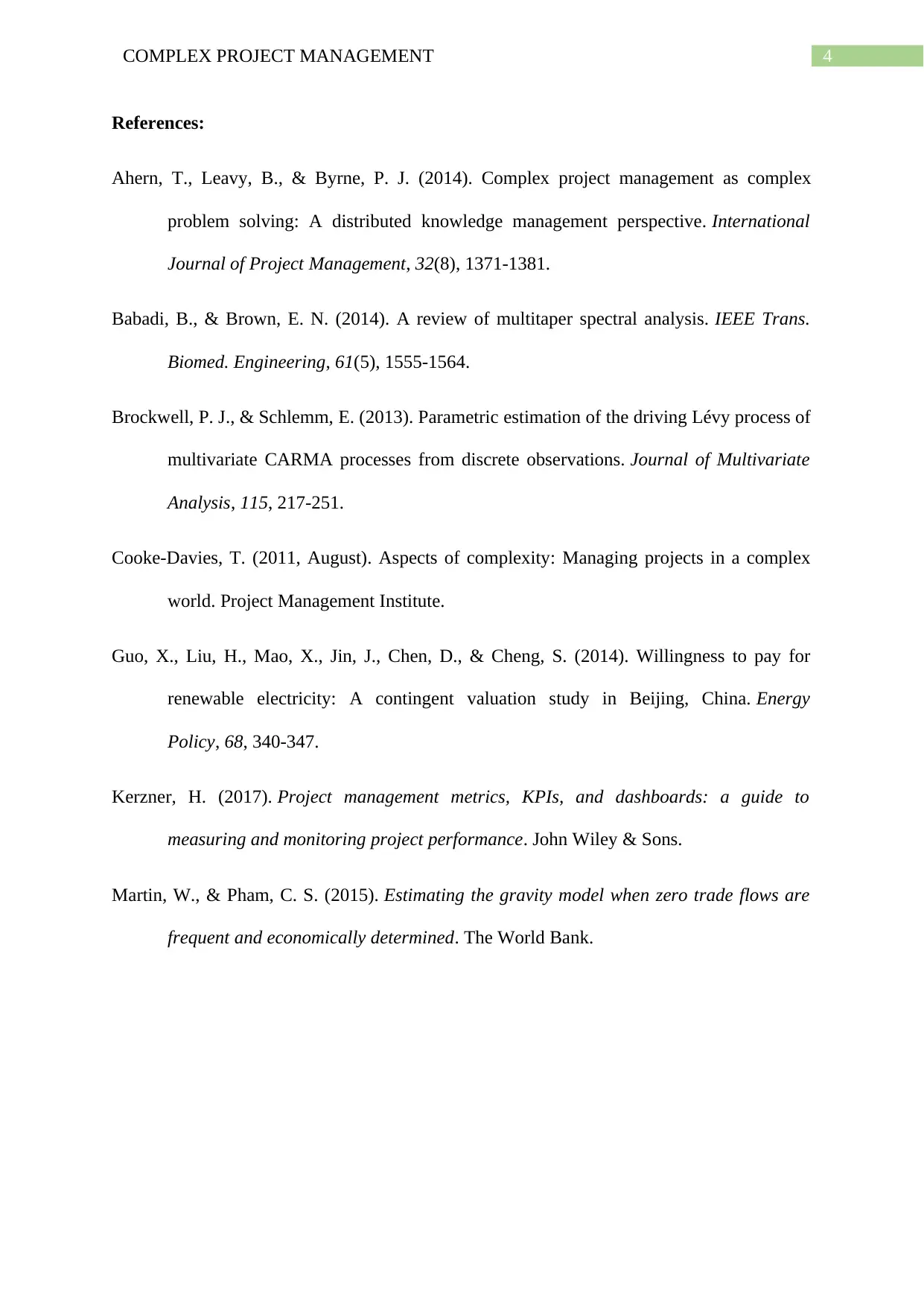Parametric Estimation Appropriateness: Non-Engineering Projects
VerifiedAdded on 2023/06/08
|5
|1150
|210
Report
AI Summary
This report examines the application of parametric estimation, a technique primarily used for engineering projects, to non-engineering projects, specifically welfare projects. The report begins by outlining the principles of parametric estimation, including its use in cost and time estimation, data normalization, and hypothesis generation. It then assesses the potential for applying these techniques in the welfare sector, considering the differences in technical complexity and data availability between engineering and non-engineering projects. The analysis highlights the importance of adapting the methodology to the specific requirements of each project type, emphasizing that both engineering and non-engineering projects share common elements like development time and cost. The report concludes that parametric estimation can be implemented in non-engineering domains, provided that the necessary project data are available and the methodology is appropriately adapted. The report references key academic sources, including works by Ahern, Leavy & Byrne (2014), Babadi & Brown (2014), Brockwell & Schlemm (2013), Cooke-Davies (2011), Guo et al. (2014), Kerzner (2017), and Martin & Pham (2015), to support its arguments.
1 out of 5











![[object Object]](/_next/static/media/star-bottom.7253800d.svg)